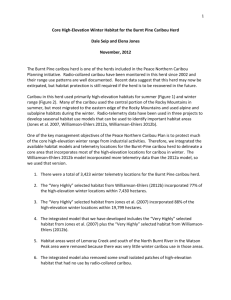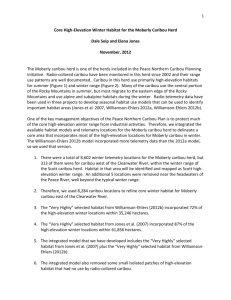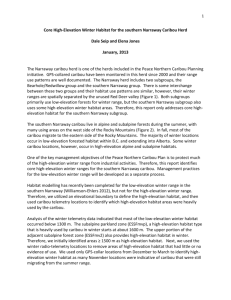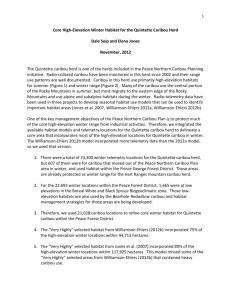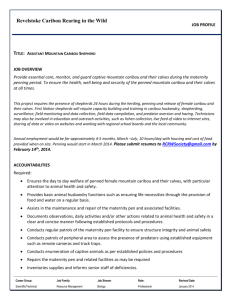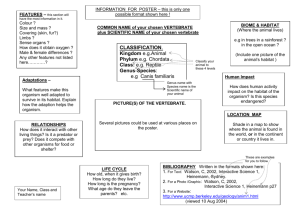Core High Elevation Habitat for the Graham Herd
advertisement
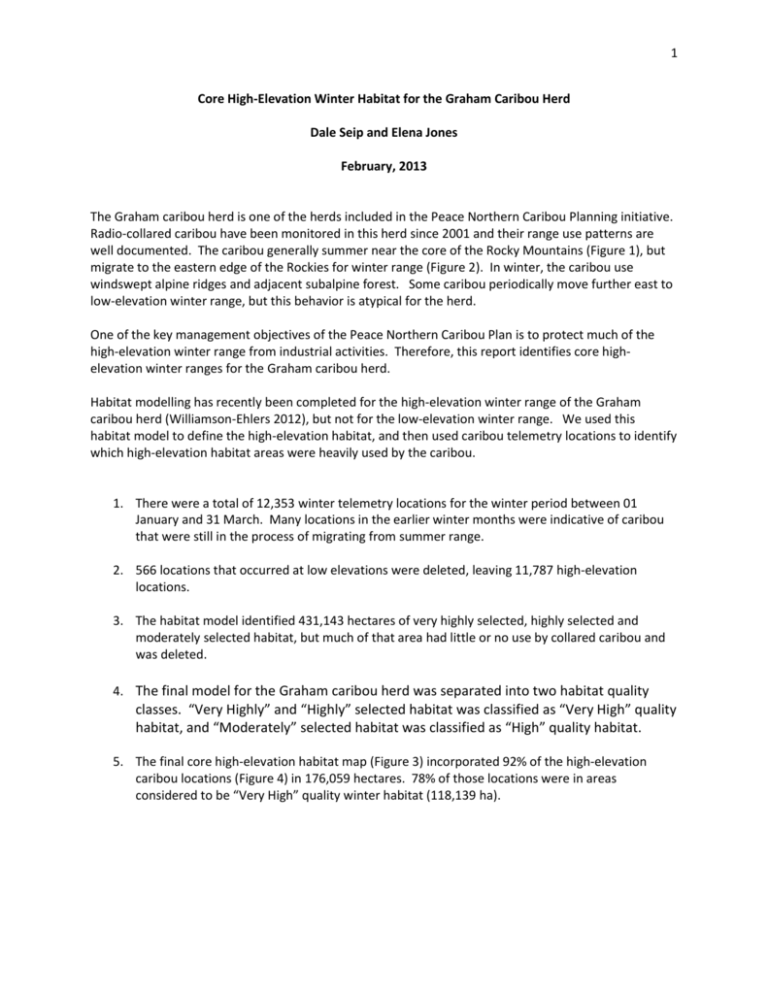
1 Core High-Elevation Winter Habitat for the Graham Caribou Herd Dale Seip and Elena Jones February, 2013 The Graham caribou herd is one of the herds included in the Peace Northern Caribou Planning initiative. Radio-collared caribou have been monitored in this herd since 2001 and their range use patterns are well documented. The caribou generally summer near the core of the Rocky Mountains (Figure 1), but migrate to the eastern edge of the Rockies for winter range (Figure 2). In winter, the caribou use windswept alpine ridges and adjacent subalpine forest. Some caribou periodically move further east to low-elevation winter range, but this behavior is atypical for the herd. One of the key management objectives of the Peace Northern Caribou Plan is to protect much of the high-elevation winter range from industrial activities. Therefore, this report identifies core highelevation winter ranges for the Graham caribou herd. Habitat modelling has recently been completed for the high-elevation winter range of the Graham caribou herd (Williamson-Ehlers 2012), but not for the low-elevation winter range. We used this habitat model to define the high-elevation habitat, and then used caribou telemetry locations to identify which high-elevation habitat areas were heavily used by the caribou. 1. There were a total of 12,353 winter telemetry locations for the winter period between 01 January and 31 March. Many locations in the earlier winter months were indicative of caribou that were still in the process of migrating from summer range. 2. 566 locations that occurred at low elevations were deleted, leaving 11,787 high-elevation locations. 3. The habitat model identified 431,143 hectares of very highly selected, highly selected and moderately selected habitat, but much of that area had little or no use by collared caribou and was deleted. 4. The final model for the Graham caribou herd was separated into two habitat quality classes. “Very Highly” and “Highly” selected habitat was classified as “Very High” quality habitat, and “Moderately” selected habitat was classified as “High” quality habitat. 5. The final core high-elevation habitat map (Figure 3) incorporated 92% of the high-elevation caribou locations (Figure 4) in 176,059 hectares. 78% of those locations were in areas considered to be “Very High” quality winter habitat (118,139 ha). 2 References Williamson-Ehler, E.P. 2012. Seasonal habitat selection for woodland caribou (Rangifer tarandus caribou) across the Peace region of northeastern British Columbia. Unpublished report, B.C. Ministry of Environment. 3 Figure 1. Summer locations (Apr – Oct) for the Graham Herd from 2001 to 2010. 4 Figure 2. Winter locations (Jan – Mar) for the Graham Herd from 2001 to 2010. 5 Figure 3. Core High-Elevation Winter Habitat for the Graham Herd. 6 Figure 4. Core High-Elevation Winter Habitat and winter locations (Jan – Mar) used to delineate Core High-Elevation Habitat for the Graham Herd.
